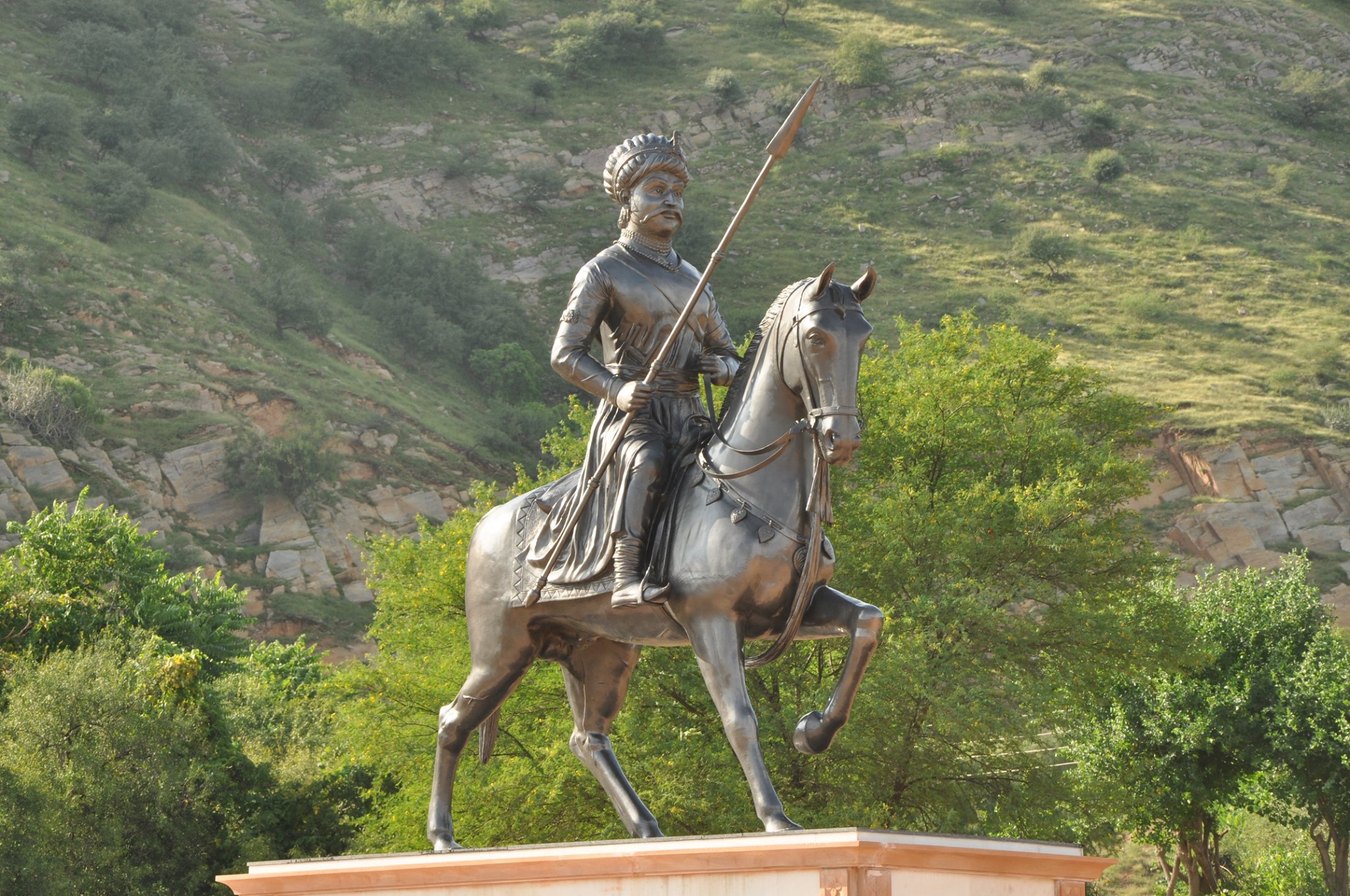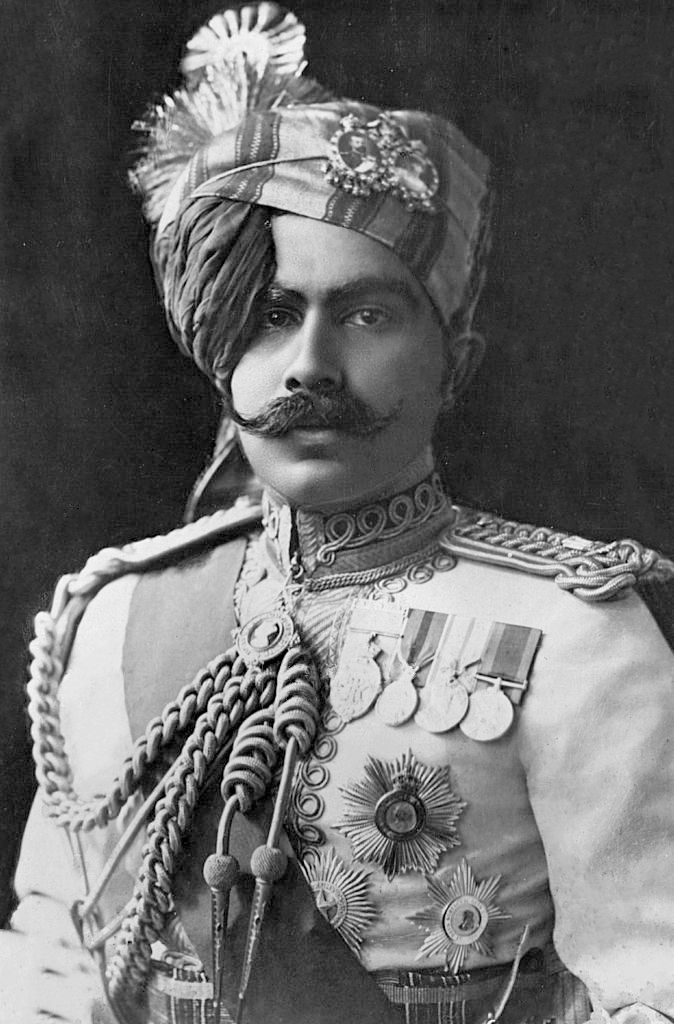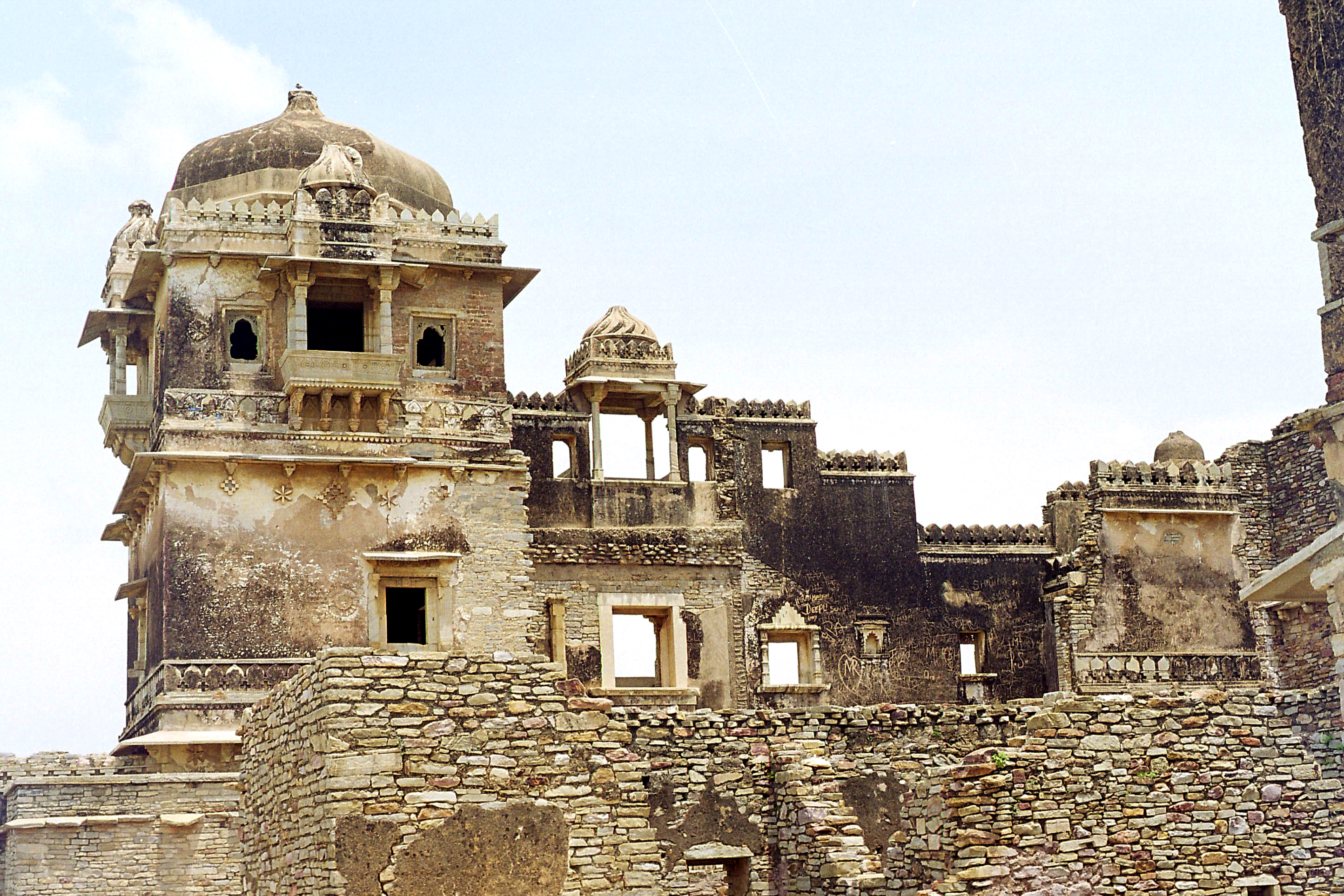|
List Of Rajputs
This is a list of notable members of the Rajput community. Saints * Mirabai, a princess and celebrated saint of the Bhakti movement and a devotee of Lord Krishna Historical figures List of notable Rajputs up till 1947, ordered chronologically by reign. * Rawal Jaisal Singh, King and founder of the city of Jaisalmer * Prithviraj Chauhan, King from the Chahamana dynasty who ruled Sapadalaksha (present-day north-western India) * Rawal Ratan Singh, King of Mewar who fought against Allauddin Khilji in the siege of Chittorgarh * Rana Hammir Singh, King of Mewar who following an invasion by the Khilji dynasty regained control of the region, re-established the dynasty after defeating the Tughlaq dynasty, and became the first of his dynasty to use the royal title 'Rana' * Rao Jodha, King of Marwar and founder of its capital city Jodhpur * Rana Kumbha, King of Mewar who expanded his territory at a time when he was surrounded by enemies from Malwa Sultanate, Gujarat Sultanate and ... [...More Info...] [...Related Items...] OR: [Wikipedia] [Google] [Baidu] |
Rajput
Rajput (from Sanskrit ''raja-putra'' 'son of a king') is a large multi-component cluster of castes, kin bodies, and local groups, sharing social status and ideology of genealogical descent originating from the Indian subcontinent. The term Rajput covers various patrilineal clans historically associated with warriorhood: several clans claim Rajput status, although not all claims are universally accepted. According to modern scholars, almost all Rajput clans originated from peasant or pastoral communities. Over time, the Rajputs emerged as a social class comprising people from a variety of ethnic and geographical backgrounds. During the 16th and 17th centuries, the membership of this class became largely hereditary, although new claims to Rajput status continued to be made in the later centuries. Several Rajput-ruled kingdoms played a significant role in many regions of central and northern India from seventh century onwards. The Rajput population and the former Rajput stat ... [...More Info...] [...Related Items...] OR: [Wikipedia] [Google] [Baidu] |
Chittorgarh
Chittorgarh (also Chittor or Chittaurgarh) is a major city in Rajasthan state of western India. It lies on the Berach River, a tributary of the Banas, and is the administrative headquarters of Chittorgarh District. It was a major stronghold of the Rajput State of Medapata. (modern Mewar) The city of Chittorgarh is located on the banks of river Gambhiri and Berach. Chittorgarh is home to the Chittor Fort, the largest fort in India and Asia. It was sacked thrice; first in 1303 by Alauddin Khalji, again in 1535 by Bahadur Shah of Gujarat, and lastly by the Mughal Emperor Akbar in 1568. Its Hindu Rajput rulers fought fiercely to maintain their independence. On all three occasions when faced with a certain defeat, the men fought to death, while the women committed suicide by jauhar (mass self-immolation). Chittor also has been a land of worship for Meera, It is also known for Panna Dai and Rani Padmini. History Originally called Chitrakuta, the Chittor Fort is said to ha ... [...More Info...] [...Related Items...] OR: [Wikipedia] [Google] [Baidu] |
Rao Shekha
Maharao Shekhaji (1433–1488) was a shtriya (Rajput) King in 15th-century India. He is the namesake of the Shekhawati region, comprising the districts of Sikar, Churu and Jhunjhunu in the modern Indian state of Rajasthan. His descendants are known as the Shekhawat. Birth On Rao Mokal's Death in AD 1445, the twelve year old Maharao Shekhaji Succeeded his father's estates at Amarsar. His parents are said to have sought prayers from a pir Sheikh, after whom Shekhaji was named. Shekhaji succeeded as the head of the Nayan and Barwada estate, along with 24 more villages, at the age of 12, as a result of the untimely death of his father Mokal Ji in 1445. Life When Shekhaji inherited his father's estate, his reputation and power attracted the jealousy of the Lord Paramount of Amber. He was attacked, but thanks to the aid of the Punnee Pathans he successfully withstood the reiterated assaults of his suzerain lord. Up to this period they had acknowledged the Amber princes as liege l ... [...More Info...] [...Related Items...] OR: [Wikipedia] [Google] [Baidu] |
Bikaner
Bikaner () is a city in the northwest of the state of Rajasthan, India. It is located northwest of the state capital, Jaipur. Bikaner city is the administrative headquarters of Bikaner District and Bikaner division. Formerly the capital of the princely state of Bikaner, the city was founded by Rao Bika in 1488 CE and from its small origins it has developed into the fourth largest city in Rajasthan. The Ganges Canal, completed in 1928, and the Indira Gandhi Canal, completed in 1987, facilitated its development. History left, Bikaner coat of arms Prior to the mid 15th century, the region that is now Bikaner was a barren wilderness called Jangladesh. Rao Bika established the city of Bikaner in 1488. He was the first son of Maharaja Rao Jodha of the Rathore clan, the founder of Jodhpur and conquered the largely arid country in the north of Rajasthan. As the first son of Jodha he wanted to have his own kingdom, not inheriting Jodhpur from his father or the title of Maharaja ... [...More Info...] [...Related Items...] OR: [Wikipedia] [Google] [Baidu] |
Rao Bika
Rao Bika Rathore (5 August 1438 – 17 June 1504), was the founder of the Kingdom of Bikaner in present-day Rajasthan. He was a scion of the Rathore clan of Rajputs. He was a son of Rao Jodha, founder of the kingdom of Marwar. Establishment of Bikaner In 1465 AD, Rao Bika (one of the sons of Rao Jodha and a potential heir to the throne of Marwar) on the occasion in question had come late and taken seat beside his uncle, Rawat Kandhal, with whom he carried a conversation in whisper. The Rao jestingly remarked that they must be making a plan of conquest of new territory, an idea constantly being suggested to him to provide for his large family. Rao Bika and Rawat Kandhal took the observation as a challenge and pledged to win new lands. The land approved by Rao Jodha to conquer through conquest was Jangladesh which had been largely weakened by war as suggested by a Napo, a Sankhala Rajput. On 30 September, 1465 AD, the 27 year old Rao Bika along with Rawat Kandhal who had sw ... [...More Info...] [...Related Items...] OR: [Wikipedia] [Google] [Baidu] |
Jodhpur State
Kingdom of Marwar, also known as the Jodhpur State under the British, was a kingdom in the Marwar region from 1226 to 1818 and a princely state under British rule from 1818 to 1947. It was established in Pali by Rao Siha, possibly a migrant Gahadavala noble, in 1243. His successors continued to struggle against regional powers for domination and 9 out of 15 rulers till 1438 died in combat. In 1395, its capital was changed to Mandore by Rao Chunda and to Jodhpur in 1459 by Rao Jodha. The kingdom remained independent until it was annexed by the Mughal Empire in 1581 after the death of Chandrasen Rathore. It remained under direct Mughal control until Udai Singh was restored to the throne as a vassal and given the title of Raja in 1583. During the late 17th century it was under the strict control of the Mughal Emperor Aurangzeb, but the ruling house of Rathore was allowed to remain semi-autonomous in their territory. During this time Durgadas Rathore struggled to pres ... [...More Info...] [...Related Items...] OR: [Wikipedia] [Google] [Baidu] |
Gujarat Sultanate
The Gujarat Sultanate (or the Sultanate of Guzerat), was a Medieval Indian kingdom established in the early 15th century in Western India, primarily in the present-day state of Gujarat, India. The dynasty was founded by Sultan Zafar Khan Muzaffar, whose ancestors were Tāṅks from southern Punjab. He rose to the nobility after marriage of his sister with Firuz Shah Tughlaq, the Delhi Sultan, and would become the Governor ( Naib) of Gujarat under the Delhi Sultanate. Zafar Khan defeated Farhat-ul-Mulk near Anhilwada Patan and made the city his capital. Following Timur's invasion of the Delhi Sultanate, the city was devastated and weakened considerably, so he declared himself independent from Delhi in 1407, and formally established the Sultanate of Guzerat. The next sultan, his grandson Ahmad Shah I moved the capital to Ahmedabad in 1411. His successor Muhammad Shah II subdued most Rajput chieftains. The prosperity of the sultanate reached its zenith during the rule of Mahmud ... [...More Info...] [...Related Items...] OR: [Wikipedia] [Google] [Baidu] |
Malwa Sultanate
The Malwa Sultanate ( fa, ) (Pashto: ; ''lit: Mālwā Salṭanat'') was a late medieval Islamic sultanate in the Malwa, Malwa region, covering the present day Indian states of Madhya Pradesh and south-eastern Rajasthan from 1392 to 1562. It was founded by Dilawar Khan, an Afghan (ethnonym), Afghan governor of the Delhi Sultanate. Dilawar Khan had ceased to pay tribute to Delhi after 1392. Following Timur's invasion and the disintegration of the Delhi Sultanate, in 1401/2, Dilawar Khan made Malwa an independent realm. History The sultanate of Malwa was founded by Dilawar Khan, Dilawar Khan Ghuri, the governor of Malwa for the Delhi Sultanate, who asserted his independence in 1392, but did not actually assume the ensigns of royalty till 1401. Initially Dhar was the capital of the new kingdom, but soon it was shifted to Mandu, Madhya Pradesh, Mandu, which was renamed Shadiabad (the city of joy). After his death, he was succeeded by his son Hoshang Shah of Malwa, Alp Khan, who ... [...More Info...] [...Related Items...] OR: [Wikipedia] [Google] [Baidu] |
Kumbha Of Mewar
Kumbhakarna Singh (r. 1433–1468 CE), popularly known as Maharana Kumbha, was the Maharana of Mewar kingdom in India. He belonged to the Sisodia clan of Rajputs. Rana Kumbha is known for his illustrious military career against various sultanates and patronization of art and music and architecture. Early life Rana Kumbha was born at Madariya, in a Hindu Rajput family of Sisodia clan. Kumbha was a son of Rana Mokal Singh of Mewar by his wife, Sobhagya Devi, a daughter of Jaitmal Sankhla, the Paramara fief-holder of Runkot in the state of Marwar. He was the 48th Rana of Mewar and succeeded Rana Mokal Singh in the year 1433 CE as the ruler of Mewar. Early period After being overrun by the armies of Alauddin Khalji at the turn of the 13th century, Mewar had become relatively insignificant. Rana Hammira is credited with casting off the Turkic yoke and establishing the second Guhila dynasty of Chittor in 1335. The title ''Rana'', and later ''Maharana'', were used by rulers of ... [...More Info...] [...Related Items...] OR: [Wikipedia] [Google] [Baidu] |
Jodhpur
Jodhpur (; ) is the second-largest city in the Indian state of Rajasthan and officially the second metropolitan city of the state. It was formerly the seat of the princely state of Jodhpur State. Jodhpur was historically the capital of the Kingdom of Marwar, which is now part of Rajasthan. Jodhpur is a popular tourist destination, featuring many palaces, forts, and temples, set in the stark landscape of the Thar Desert. It is popularly known as the "Blue City" among people of Rajasthan and all over India. It serves as the administrative headquarters of the Jodhpur district and Jodhpur division. The old city circles the Mehrangarh Fort and is bounded by a wall with several gates. The city has expanded greatly outside the wall, though over the past several decades. Jodhpur lies near the geographic centre of the Rajasthan state, which makes it a convenient base for travel in a region much frequented by tourists. The city featured in ''The New York Timess "52 Places to Go in 2020 ... [...More Info...] [...Related Items...] OR: [Wikipedia] [Google] [Baidu] |
Marwar
Marwar (also called Jodhpur region) is a region of western Rajasthan state in North Western India. It lies partly in the Thar Desert. The word 'maru' is Sanskrit for desert. In Rajasthani languages, "wad" means a particular area. English translation of the word 'marwar' is 'the region of desert.' Historically, the term 'Marwar' referred to a geographical entity spanning a cultural area across nearly all of Rajasthan. More specifically, it designates the western region of the present-day state of Rajasthan, spanning the districts of Jaisalmer, Barmer, Jalore, Jodhpur, Nagaur, Pali, Bikaner, Sikar, Churu, and Jhunjhunu. In its most contracted definition, Marwar comprises the areas governed by the erstwhile princely state of Jodhpur State, which includes the present-day districts of Barmer, Jalore, Jodhpur, Nagaur, Pali and parts of Sikar. Jodhpur State was bounded on the north by Jangladesh region, on the northeast by Dhundhar, on the east by Ajmer, on the southeast by Me ... [...More Info...] [...Related Items...] OR: [Wikipedia] [Google] [Baidu] |
Rao Jodha
Rao Jodha Rathore(28 March 1416 – 6 April 1489) was a ruler of Mandore in the present-day state of Rajasthan. He was the son of Rao Ranmal (Rao Ridmal) of the Rathore clan. He is known for his illustrious military career and for founding the city of Jodhpur in 1459. Ancestry Rao Ranmal secured the throne of Mandore in 1427. In addition to ruling Mandore, Rao Ranmal also became the administrator of Mewar to assist Maharana Mokal (father of Rana Kumbha). After the assassination of Maharana Mokal by two brothers (Chacha and Mera) in 1433, Ranmal continued as administrator of Mewar at the side of Rana Kumbha. Early years After Rana Kumbha assassinated Rao Jodha's father Rao Ranmal, Rao Jodha escaped Mewar with his men. Approximately 700 horsemen accompanied Rao Jodha from Chittor. Fighting near Chittor and a valiant attempt to bar the pursuers at Someshwar Pass resulted in heavy losses amongst Jodha's warriors. When Jodha reached Mandore he had only seven people accompanying him ... [...More Info...] [...Related Items...] OR: [Wikipedia] [Google] [Baidu] |
.jpg)









_Suresh_Godara.jpg)